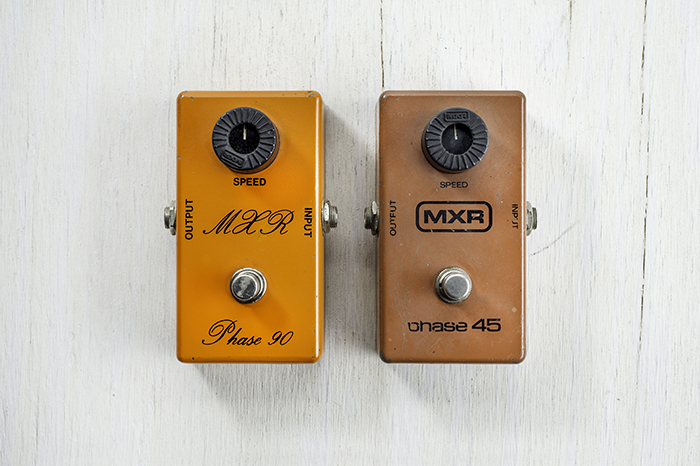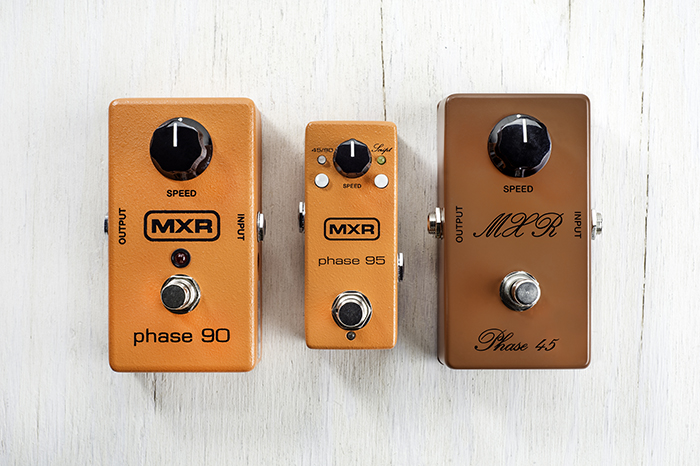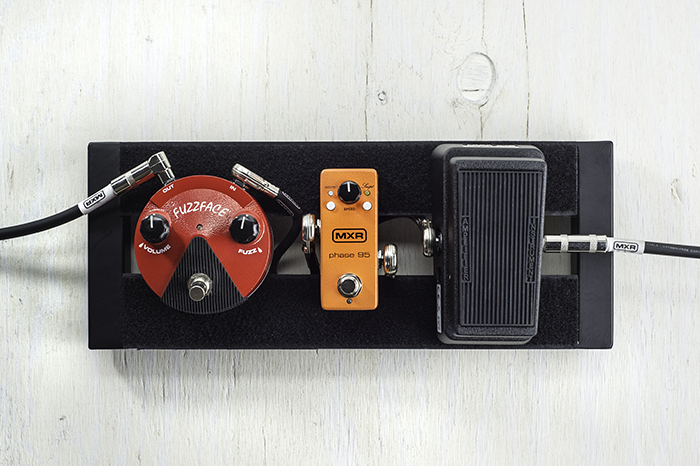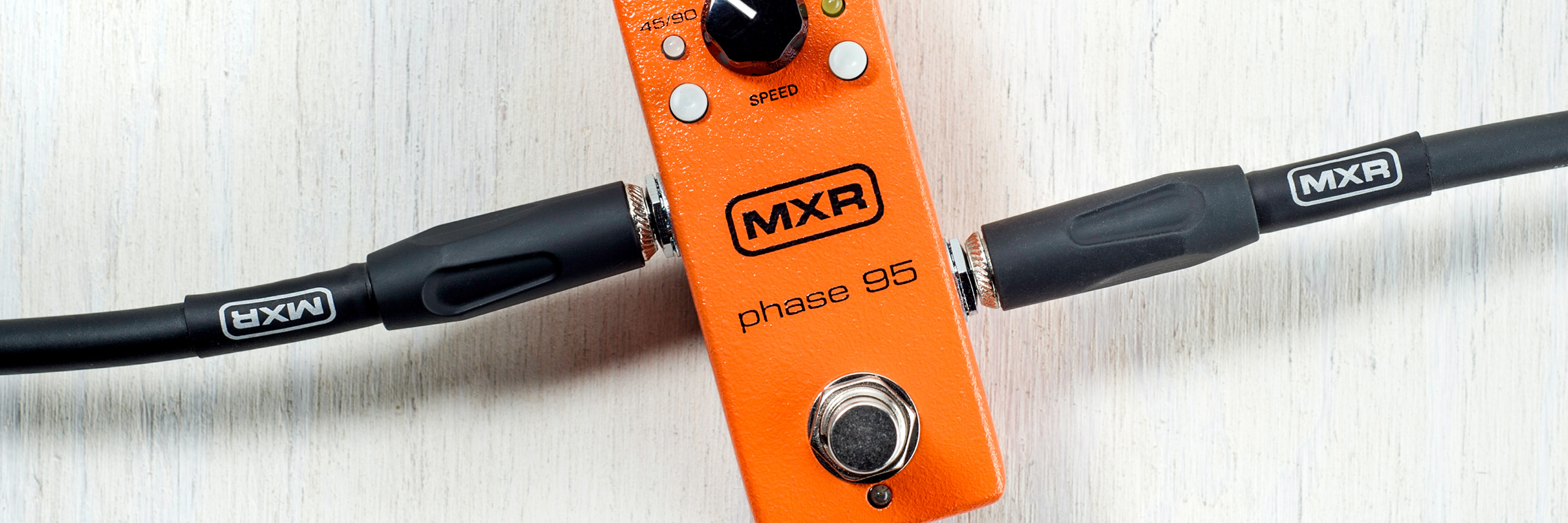Several Phase 90-based phasers have been released since then, and this year, we’re introducing the Phase 95—it packs the evolution of the Phase 90 circuit into a single housing, and at half the size of its forebear, it’s the first ever mini pedal from MXR. The Phase 95 is the most versatile phaser we’ve ever produced. Before we get into the how and why, let’s look at the MXR phasers that brought us to this point.

It all started with the Phase 90, created by engineer Keith Barr after he decided that he could build a more reliable and better sounding phaser than the bulky and poorly built options on the market at the time. The resulting pedal’s compact size, superior construction, and refined sound put MXR on the map, and it set the standard by which all other phasers are judged.
A couple years after MXR released the Phase 90, the Phase 45 was born. In contrast to the Phase 90’s 4-stage phasing, the Phase 45 was designed with a mellower 2-stage circuit that is favored for its ability to easily blend into a band’s mix.
As MXR transitioned from script logo to block logo housings, MXR’s engineers added a feedback resistor to the Phase 90 circuit. Whereas the first Phase 90 circuit—now called Script—had a subtle and more subdued swoosh, the feedback resistor gave what is now called the Block circuit a dirtier, more pronounced phasing sound. A small number of early Block logo housings contain the original Script circuit, so it’s not always accurate to rely just on the pedal’s housing when identifying a vintage Phase 90.
In the late 1970s, MXR released the Phase 100, which has an altogether different circuit from the Phase 90 and Phase 45, with a different range of sounds. Along with the Speed control, it features a 4-position rotary switch that selects between four different intensities.

MXR went out of business in the early 1980s, but Dunlop resurrected the brand toward the end of the decade. The first pedals to be released under Dunlop’s stewardship were the Distortion+, the Dyna Comp® Compressor, the Blue Box™ Fuzz, and of course the Phase 90, all in Block form with the on/off status LEDs and AC power jacks that MXR eventually added. Since then, Dunlop has re-released each of MXR’s original phasers and has continued to develop new ones along the way.
Our first Phase 90 innovation came in the form of the EVH Phase 90.

When Eddie Van Halen expressed interest in recreating some of his classic MXR pedals, Dunlop engineer Bob Cedro thought of the spacey swirls and hypnotic warbles heard on early Eddie’s early recordings and pulled out his original 1974 script logo Phase 90. Using that as his base, Bob built a prototype Script-style Phase 90 that he hot-rodded for increased headroom and dynamic range. For testing purposes, he included a switch that Eddie could use to toggle between the two sounds for comparison. Eddie loved it, but he wanted to keep the Script/Block switch so that he could have both circuits in hot-rodded form.
The huge success of the EVH Phase 90 led Bob back to his original 1974 Phase 90. He used it to create the ’74 Vintage Phase 90, which features a hand-wired board with select resistors and hand-matched FETs and comes housed in the classic orange finished box with the unmistakable Script logo. For further authenticity, this box has no LED and can only be powered by a battery. For those who wanted a Script version with modern upgrades such as the on/off status LED and an AC power jack, Bob and the MXR team created the Script Phase 90.
To date, Dunlop has only produced one standalone version of the Phase 45: the ’75 Vintage Phase 45, a reissue of the original built to exacting specifications. As with the Vintage Phase 90, it features hand-matched FETs and a hand-wired circuit board.

Now let’s talk about the incredibly versatile Phase 95. First, you get both the mellow two-stage phasing of the Phase 45 and the more intense four-stage phasing of the Phase 90, with a 45/90 switch to toggle between the two. Once you select between those two iconic MXR phasers, you can choose to go with the lush, subdued sound and clarity of the original Script circuit or the light harmonic distortion and accentuated swoosh of the modern Block circuit thanks to the Script switch. As always, the familiar Speed control sets the rate of the effect.
What you’re getting with the Phase 95 is four different pedals in one: a Script Phase 45, a Script Phase 90, a Block Phase 45—which has never been offered before—and a Block Phase 90. Oh, and as we mentioned, it all comes in a mini housing that takes up a fraction of the space occupied by a standard pedal. Here’s how it looks on a mini travel board with a Germanium Fuzz Face® Mini Distortion and a Cry Baby® Mini Wah:











